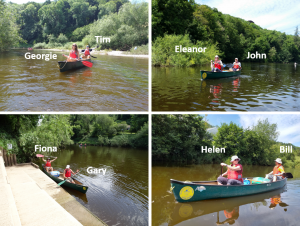Dr Philip Copestake of Merlin Energy will be giving a presentation entitled “Ireland, a whole new story” at the upcoming FORCE webinar, to be held on 26th-28th October, 2021. FORCE is a cooperating forum for improved oil and gas recovery (IOGR) and Improved Exploration (IE) comprising oil and gas companies and regulatory authorities (including the Norwegian Petroleum Directorate) in Norway. The webinar is entitled “Multiproxy biostratigraphy: Recent and future advances in the application and technologies”.
The aim of Phil’s presentation is to describe how biostratigraphy was used in the “The Standard Stratigraphic Nomenclature of Offshore Ireland: An Integrated Lithostratigraphic, Biostratigraphic and Sequence Stratigraphic Framework” (Project Atlas. Petroleum Affairs Division, Department of Communications, Climate Action & Environment, Special Publication 1/21). It was completed by a Merlin led consortium in October 2020 and released into the public domain during 2021 (click here for link to download).
Biostratigraphic data were used extensively in this study primarily to provide a biozonal and interpreted chronostratigraphic framework for all the subsurface evaluations. This framework has been utilised in the following ways:-
- to calibrate and support seismic correlations, and related well-based sequence stratigraphic interpretations.
- as a basis for the newly defined lithostratigraphic scheme.
- to provide the basis for the recognition of unconformities (by the absence of missing biozones) which have aided the definition of stratigraphic sequences.
- to age date these breaks, which will aid in the recognition of the timing of major tectonic changes across the region.
- to aid the interpretations of palaeoenvironments, allowing the recognition of a range of depositional settings of key sedimentary successions. Shifts, whether gradual or sharp, in biofacies are indicative of palaeoenvironmental changes and can be used to recognise relative deepening and shallowing trends that aid the definition of stratigraphic sequences.
Examples will be given of particularly distinctive and important results from the new biostratigraphic work on the project, focusing on the Jurassic, Cretaceous and Paleogene intervals.
The presentation will be co-authored by Drs Nigel Ainsworth, Liam Gallagher and Matt Hampton, of Palaeodate and Network Stratigraphic Consulting, who were major authors of the biostratigraphic work on the Ireland project.
The presentation will concentrate on the biostratigraphic input to this regional study, with examples of innovative findings from selected intervals, the calibration of seismic and a focus on the value of this (unique) unified dataset for any geoscientist working on the offshore Ireland and wider North Atlantic region. An article on the content and scope of this study was previously published in our newsletter.





